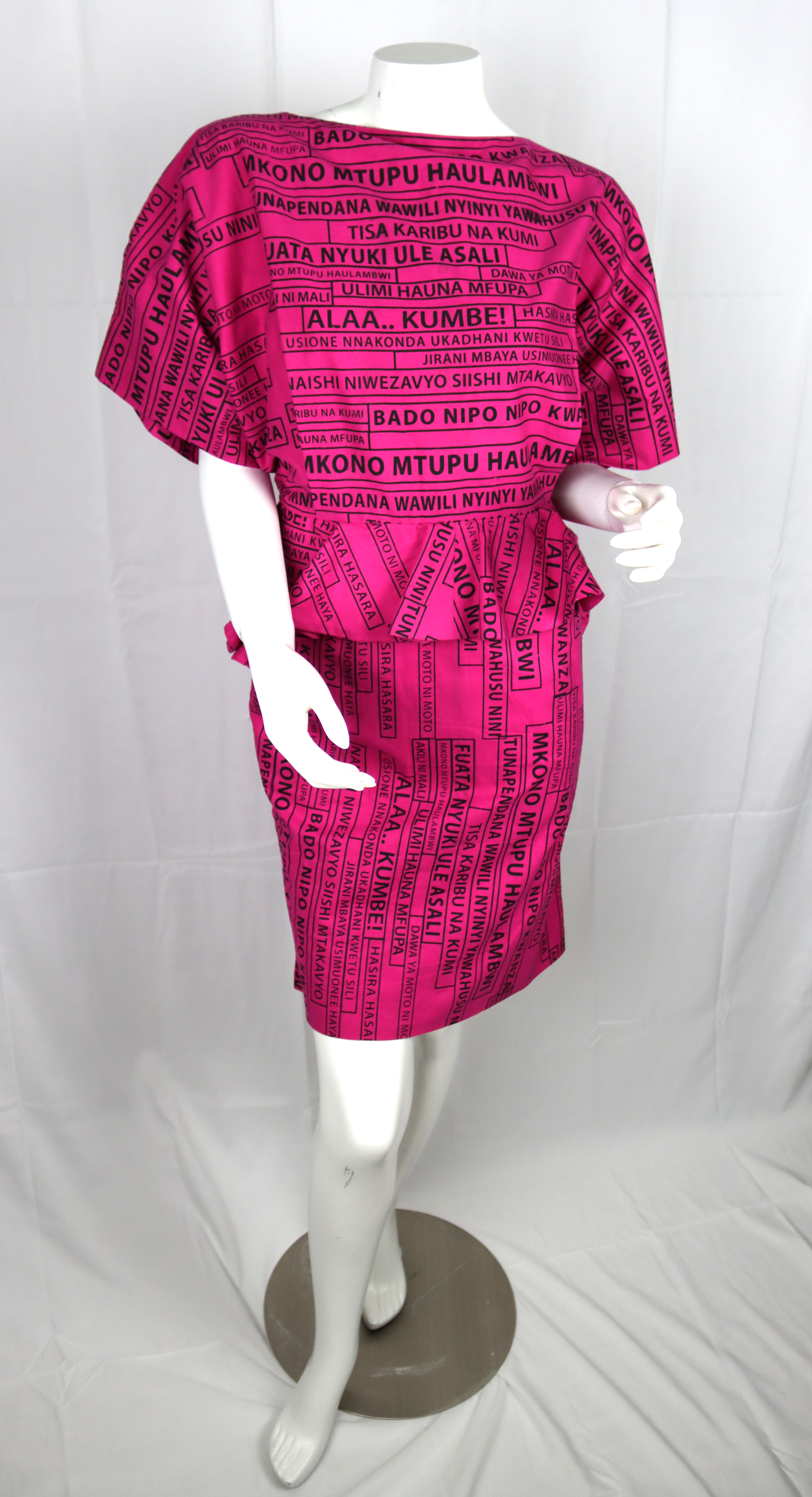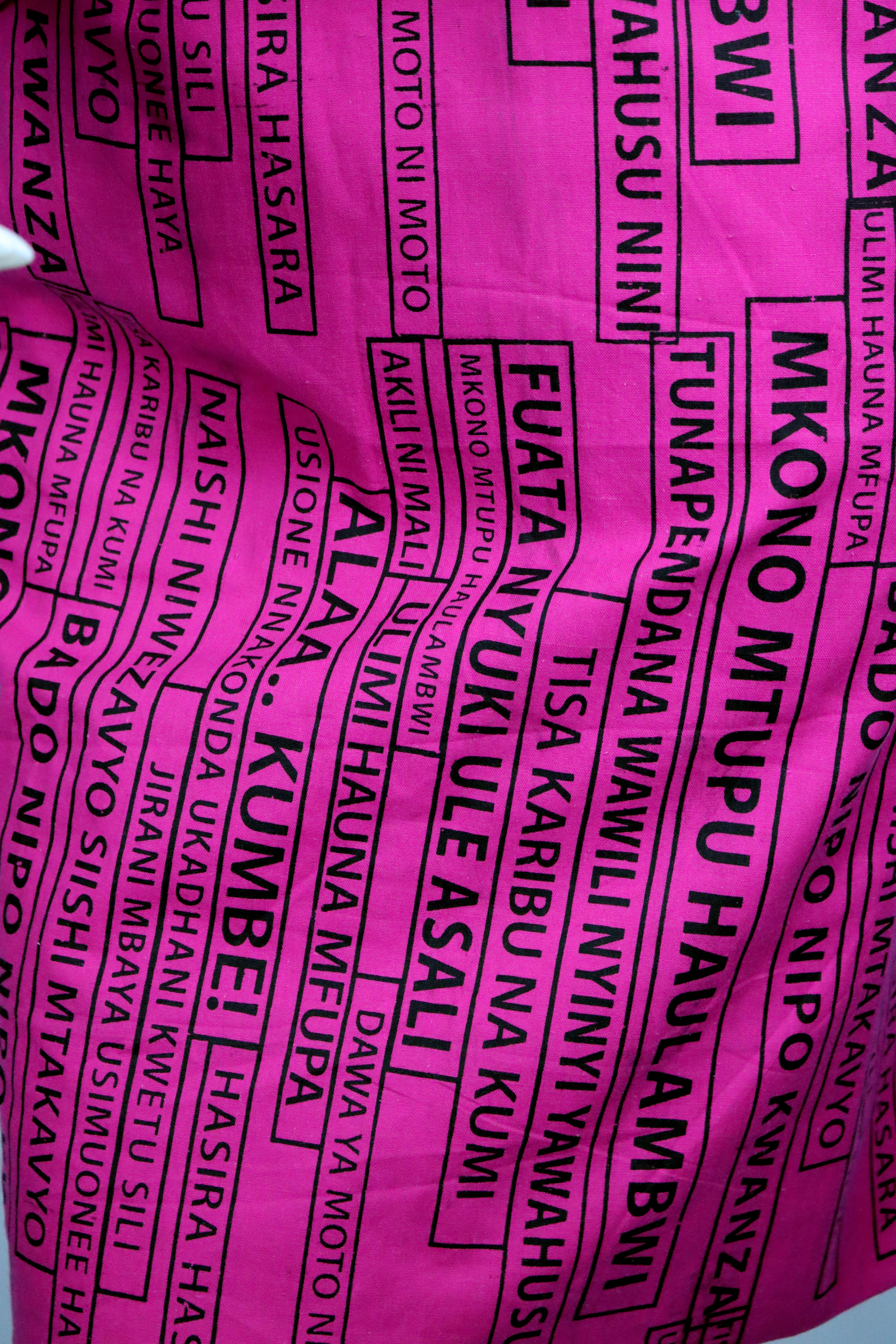Working with the University Museum’s textile collections has been by turns interesting, dusty, and often surprising. Over the summer, I have been inventorying part of the textile collection: taking photos for identification, either retagging or tagging an object for the first time, carefully storing it in preservation materials, and entering information into the museum’s database. Throughout this process I can see the wide range and variety—both historically and geographically— of the many objects in collections. Some of these textiles have been previously discussed on the blog, such as the textiles for the upcoming Fall exhibit of Maya textiles from Chiapas, and the historical collections full of garments closely tied to New Mexico and NMSU’s past. Recently, my eye was caught by a 21st century dress that represents an intersection of East African and Western European textile traditions and trends. (UM_2014.01.01)

A Kanga inspired dress, 2014.01.01, Univeristy Museum
Everything about this dress is eye-catching. It is made from a hot pink cotton with a print of overlapping Swahili text in black capital letters, cut and sewn into knee length dress with waist darts, a wide neckline, and a peplum waist in the front for flair. A viewer’s first glance lets you know this is meant to be a statement piece, though the statement goes further than surface-level visual aesthetic. The history and intent of this garment is a story told by and about the designer; it holds potential for starting conversations about globalization, cultural agency, and cross-cultural interaction.
This hot pink dress is a design purchased from London-based fashion house ChiChiA London. Founded in 2009, ChiChiA London is the work of Tanzanian-born designer Christine Mhando. The brand is based in London, England, with a secondary base in Dar es Salaam, Tanzania. The dress can be considered representative of ChiChiA London’s design style, which the brand describes as “Think East Africa meets London cool.” This amalgamation of culture and continents, as their Facebook business page puts it, draws from Mhando’s own lived experiences.
Peplum close up,2014.01.01, University Musuem
The fabric and its print are inspired by a traditional textile known as a kanga (khanga depending on spelling) and which is worn by many East African women. A kanga can be worn in many ways, but most often as a wrap. Typically, a kanga consists of a printed rectangle of cotton with a framing border design (pindo), a centerfield design (mji), and a Swahili (Kiswahili) proverb or saying (jina).
The kanga has a history starting in the 19th century at the height of colonial rule. Although it is an East African textile, the kanga draws connections to other places through global trade of raw materials and labor. The raw cotton cloth that becomes the kanga was once sourced through the 19th century American cotton industry. From there European manufacturing techniques and design influences from both Europe and Southeast Asia were incorporated into the creation of the kanga. Motifs from Indonesian batiks and the border styles of European printed textiles, resist dye techniques from India, and of course the vibrant color palettes of East African cloth printing all went into the kanga.

Close up of dress, 2014.01.01, University Musuem
Relevant to our dress is both the printed cotton fabric and the text print itself. The proverbs and sayings commonly seen on kangas have been layered onto this dress. As important to the cloth as the color and designs, the text is another medium of self-expression and empowerment. Often the text on a kanga quite literally acts as a message; women intentionally wear and display a kanga to communicate something. Therefore, the choice to fuse together this textile tradition with contemporary European favored silhouettes and London trends is doubly meaningful. This dress is indeed a statement, visually striking and culturally meaningful. Mhando’s creations carry both her personal history and a history of global trade and empire.